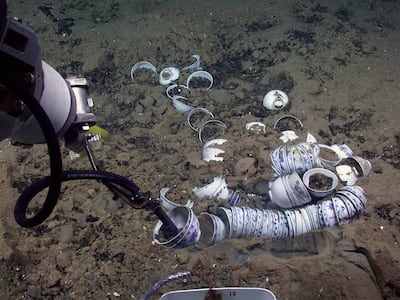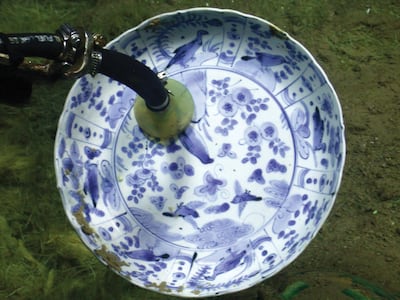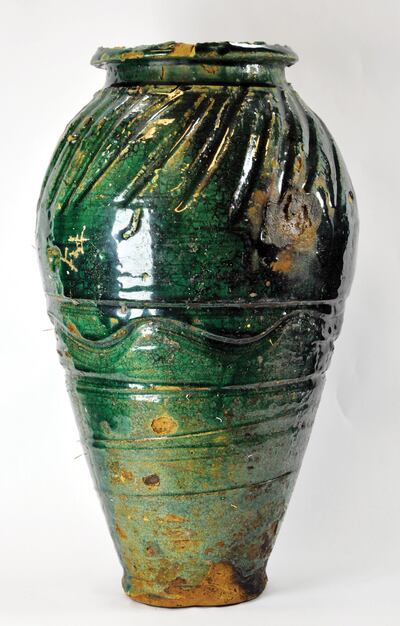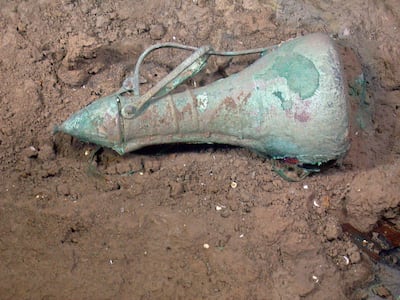Underwater archaeologists have discovered a giant shipwreck two kilometres beneath the Mediterranean Sea that casts new light on the advanced state of multinational trade in the Middle East nearly 400 years ago.
Cargoes drawn from 14 nations were found on the trading vessel that sank around 1630 while sailing from Egypt to Istanbul. Its load included fine Chinese porcelain fit for the table of Sultan Murad IV, the ruler of the Ottoman Empire, according to the company behind the discovery.
The 588 items recovered from the wreck in 2015 have been impounded following a dispute over documentation by Cyprus which is seeking to sell them at auction. The UK-based company Enigma Recoveries said it was seeking an “amicable agreement” which would see the items eventually displayed in a major international museum.
The trader was found by underwater robots two kilometres down in waters off the coast of Lebanon following seven decades of fruitless searching. Another 11 wrecks were discovered within a few kilometres, one of which dated back more than 2,000 years, in an area that Enigma described as the “cradle of navigation”.
The company believes that the oldest ship was caught in a storm some 2,200 years ago and sank while its crew were at prayer owing to the discovery of religious artefacts on the uniquely preserved deck.
The search centred on the Levantine Basin, a deep-water area that had attracted less attention for archaeologists then the western Mediterranean, according to Enigma.
Its experts believe that the large shipment had probably been amassed in Cairo – the second biggest city in the Ottoman empire and a huge centre of trade – before being transported to the port of Alexandria to be loaded for onward passage to Istanbul.
“If you want to find better preserved stuff, you have to go into the abyss,” said Dr Sean Kingsley, an adviser to the project. “Nothing like this has been found before. This is the archaeological equivalent of finding a new planet.”
The Ottoman trader was so large that two normal sized ships could have fitted on its deck. Its hold was found to contain the earliest Chinese porcelain ever discovered on a Mediterranean wreck.
Pepper from India, water jars from Yemen and incense from Arabia were among the items loaded on to the ship with items sourced from a 9,000-kilometre arc linking Italy to southern China.
“The trader’s tragic loss is science’s gain: the first proof of a maritime silk road linking China, India, the Gulf, Red Sea and West 390 years ago,” said Dr Kingsley.
The cups decorated with idyllic rural scenes were adapted in Ottoman hands to the new fashion of coffee drinking in the region. Despite its popularity, the sultan made drinking coffee a capital offence and shut down coffee shops that were seen as centres of seditious behaviour.
A crate of clay pipes was also found on the wreck from a time when tobacco was also banned as an intoxicant by religious authorities.
“Smoking and the billion-dollar coffee industry are seen as markers of modern culture in the Eurocentric view of the world,” said Dr Kingsley. “Yet coffee shops were open a century earlier than the West in the Near East.”
Other items that were discovered cast a light on life at sea, including copper coffee pots, a wooden chess piece and a section of coiled rope used to beat the feet of crew to keep them in line.
“Despite being attacked by shipworms, silent assassins of the seas, the ship is richly preserved with a dizzying mix of goods from the ends of the world,” said Tim McKechnie, co-director of Enigma Recoveries.












